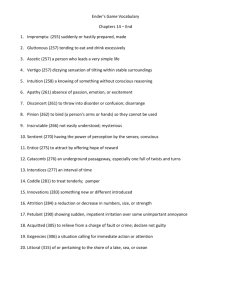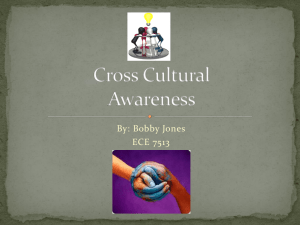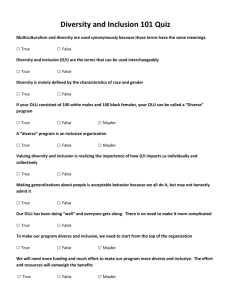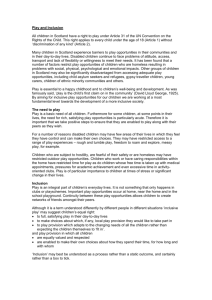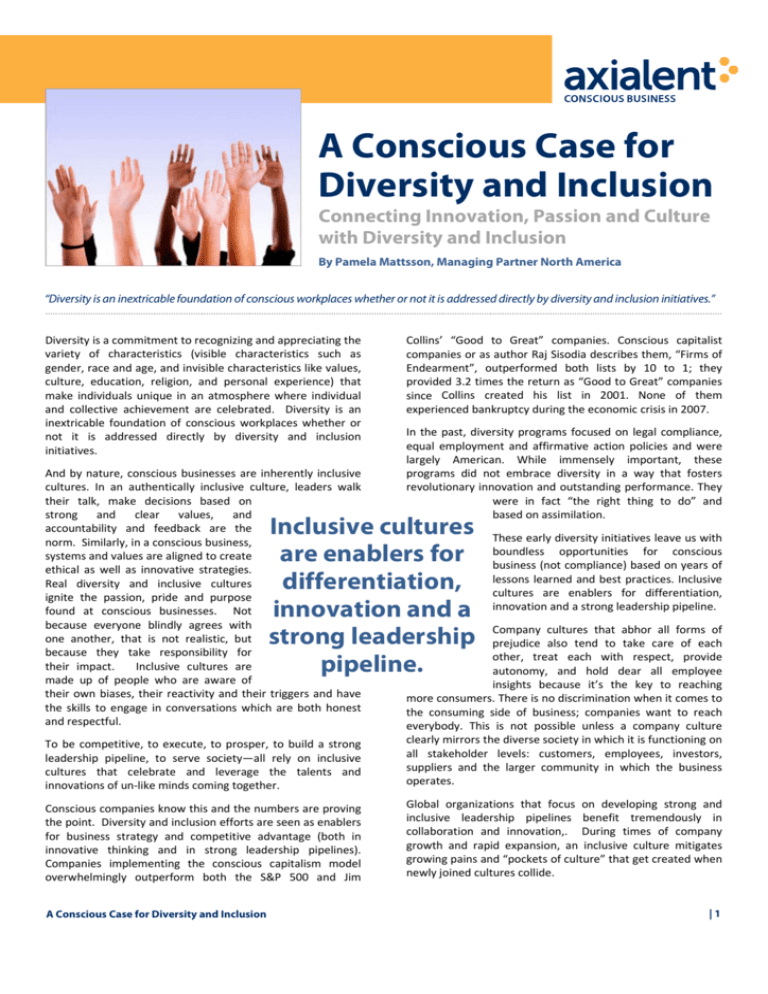
A Conscious Case for
Diversity and Inclusion
Connecting Innovation, Passion and Culture
with Diversity and Inclusion
By Pamela Mattsson, Managing Partner North America
“Diversity is an inextricable foundation of conscious workplaces whether or not it is addressed directly by diversity and inclusion initiatives.”
Diversity is a commitment to recognizing and appreciating the variety of characteristics (visible characteristics such as gender, race and age, and invisible characteristics like values, culture, education, religion, and personal experience) that make individuals unique in an atmosphere where individual and collective achievement are celebrated. Diversity is an inextricable foundation of conscious workplaces whether or not it is addressed directly by diversity and inclusion initiatives. And by nature, conscious businesses are inherently inclusive cultures. In an authentically inclusive culture, leaders walk their talk, make decisions based on strong and clear values, and accountability and feedback are the norm. Similarly, in a conscious business, systems and values are aligned to create ethical as well as innovative strategies. Real diversity and inclusive cultures ignite the passion, pride and purpose found at conscious businesses. Not because everyone blindly agrees with one another, that is not realistic, but because they take responsibility for their impact. Inclusive cultures are made up of people who are aware of their own biases, their reactivity and their triggers and have the skills to engage in conversations which are both honest and respectful. Collins’ “Good to Great” companies. Conscious capitalist companies or as author Raj Sisodia describes them, “Firms of Endearment”, outperformed both lists by 10 to 1; they provided 3.2 times the return as “Good to Great” companies since Collins created his list in 2001. None of them experienced bankruptcy during the economic crisis in 2007. In the past, diversity programs focused on legal compliance, equal employment and affirmative action policies and were largely American. While immensely important, these programs did not embrace diversity in a way that fosters revolutionary innovation and outstanding performance. They were in fact “the right thing to do” and based on assimilation. Inclusive cultures
are enablers for
differentiation,
innovation and a
strong leadership
pipeline.
These early diversity initiatives leave us with boundless opportunities for conscious business (not compliance) based on years of lessons learned and best practices. Inclusive cultures are enablers for differentiation, innovation and a strong leadership pipeline. To be competitive, to execute, to prosper, to build a strong leadership pipeline, to serve society—all rely on inclusive cultures that celebrate and leverage the talents and innovations of un‐like minds coming together. Company cultures that abhor all forms of prejudice also tend to take care of each other, treat each with respect, provide autonomy, and hold dear all employee insights because it’s the key to reaching more consumers. There is no discrimination when it comes to the consuming side of business; companies want to reach everybody. This is not possible unless a company culture clearly mirrors the diverse society in which it is functioning on all stakeholder levels: customers, employees, investors, suppliers and the larger community in which the business operates. Conscious companies know this and the numbers are proving the point. Diversity and inclusion efforts are seen as enablers for business strategy and competitive advantage (both in innovative thinking and in strong leadership pipelines). Companies implementing the conscious capitalism model overwhelmingly outperform both the S&P 500 and Jim Global organizations that focus on developing strong and inclusive leadership pipelines benefit tremendously in collaboration and innovation,. During times of company growth and rapid expansion, an inclusive culture mitigates growing pains and “pockets of culture” that get created when newly joined cultures collide. A Conscious Case for Diversity and Inclusion |1
www.axialent.com
One of our successful engagements includes a $100B global financial‐services firm who needed 10,000 leaders to effectively inspire 110,000 employees to turn its insurance business into the preferred company among key stakeholders. We worked to change their culture to a customer‐centric one through employee engagement across 30 countries, with different religions, beliefs, languages, histories and business focuses. We developed a successful employee‐engagement strategy by winning stakeholder’s hearts and minds and consciously building the right culture. How did we do this? By designing a global program providing leaders with a way to inspire, empower, and build a customer‐centric culture—all within a paradigm of self‐
awareness, consciousness and inclusion. Since our founding year in 2003, we’ve identified four major metrics that are measurably affected by diversity and inclusion business practices: Innovation, productivity, reputation, and adaptability. What happens when an assemblage of widely varied identities combine to solve a problem? Conflict. Sparks. New perspectives never realized before. Managed with honesty, respect, deep curiosity, and a pursuit of core truth, these new perspectives become productivity‐saving new ideas and industry‐leading innovations. For businesses this means differentiation and a competitive advantage in the form of highly adaptable and strongly diverse teams. For example, when Business Week asked the world’s top managers why Google is so innovative, a common sentiment stated, “Due to the culture they have embedded in the organization. This encourages and rewards even unsuccessful innovation ideas due to the learning benefit that can come from them.” An innovative company like Google is also an extremely adaptable one. They take responsibility for mistakes and then move quickly beyond them, without blame, keeping only what worked and then immediately pushing forward—missteps forgotten. A common saying at Google is “Fail fast, fail often.” Managing reputation in a conscious company almost takes care of itself. In a conscious (and implicitly inclusive) organization, when all stakeholder groups are served synchronously reputations soar. Take for instance this study compiled by Catalyst.org1 : Fortune 500 companies with the highest number (3+) of women board members for an extended period of time (3‐4 years) saw an 84% increase on their ROS, a 60% increase on ROIC, and at 46% increase on ROE. Research shows that “a diverse staff enhances financial performance, reduces turnover, improves productivity, increases job satisfaction and employee morale, decreases vulnerability to legal challenges, and enhances the corporate reputation.”2 Now lets think about the time, money, and human resources spent on turnover when employees leave a work environment where they felt unwelcome. DiversityInc found that it costs US employers $64 billion to replace professionals. At Axialent, we frequently see how this problem can cost our clients dearly. In another Axialent case, we were hired by a global advertising holding company in the wake of acquiring 185 companies over a 2‐year period. This massive growth resulted in global HR inconsistencies, major talent retention problems, administrative redundancies and an overall sense of frustration across the organization. We responded with a focus on interpersonal issues directly related to diversity and inclusion of all cultures and work styles; intense team development programs focused on new behaviors and skills; and then a strategic planning process to create a sense of alignment and accountability across the organization. The impact? Global agreement on policies surrounding talent management, compensation, benefits, and diversity resulting in a measurable increase in talent retention and overall productivity costs. No company, regardless of location, size, or industry, is immune to the driving need for more conscious and therefore diverse and inclusive business practices—that is, if they want to lead the way for the future of their industries. Axialent is the top‐tier solution if diversity and inclusion is stalled, archaic, or not producing the strikingly successful results we know are possible when business is practiced consciously. To learn more about communication skills that support inclusive cultures click here. © 2012 Axialent Inc. All rights reserved.
1 Rachel Soares, Christopher Maruis, and Matthew Lee. “Gender and Corporate Social Responsibility: It’s a Matter of Sustainability.” Catalyst, 2011. 2
J. Phillips L. Johnston, “Male, Pale and Stale,” Directors & Boards, Third Quarter 2005:48–50, at 50. A Conscious Case for Diversity and Inclusion |2




